Michigan vegetable crop report – August 27, 2025
Farms are busy completing harvests while remaining mindful of vegetable pest management.
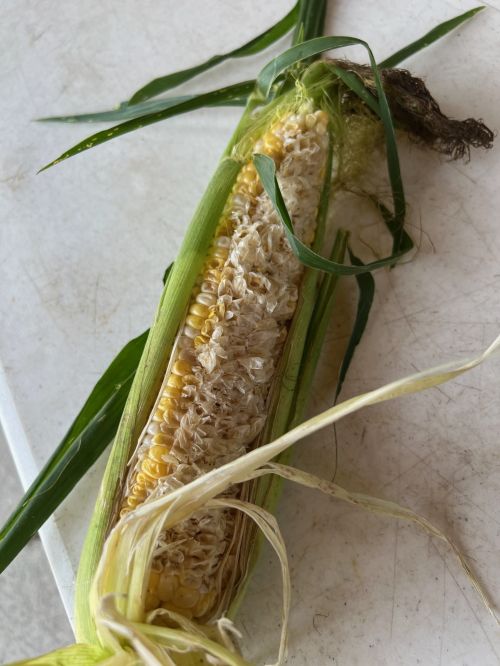
Weather
This week’s forecast calls for:
- Showers and thundershowers likely south Thursday, Aug. 28. Fair, dry and gradually warmer Friday through early next week.
- High temperatures in the 60s Thursday, warming to the 70s to low 80s by early next week. Lows generally in the 40s Friday morning, warming into the 50s by early next week.
- Medium range outlooks for the second week of September call for cooler than normal mean temperatures and normal to above normal rainfall totals.
New vegetable weed science professor
Josh Miranda, PhD, has started as an assistant professor and specialist in fruit and vegetable weed control at Michigan State University (MSU). He will be conducting research on specialty crop weed management. Check out Miranda’s introductory article:
Crop updates
Asparagus
Continue to watch TomCast data from your sensors as the spray season moves into September. In recent years, some growers have experienced premature defoliation due to purple spot when temperatures remain high through September. But it all depends on the weather! This is where Tomcast can help. Higher daily disease severity values indicate conditions are still favorable, while 0s and 1s indicate less favorable weather. Either way, consider applying azoxystrobin as part of your last fungicide cover.
Cucurbits
Cucumber and zucchini picks have been steady. Melon yields have been reported to be high. Some growers are concerned pumpkin and seedless watermelon fruit sets appear to be low. This is tough to estimate with full leaf cover, but the hot and dry period could have had some effects on flower sex ratio or pollination in some cases.
According to data collected at the Southwest Michigan Research and Extension Center on a multi-pick cucumber trial, there was a consistent dip in productivity across eight varieties Aug. 4-8, which accounts for fruit that would have been pollinated about 10-14 days prior to that, or July 21-29. The weather during this period was stressful, with highs in the high 80s and low 90s with no precipitation. Additionally, days were bright, with a notable exception of the haziness on July 25 and 26.
The following week, temperatures were lower but not much else was different, and the fruit production seemed to respond with a bump in picks 10-14 days later. Many pumpkins and watermelons would have been flowering during this same period, but whether or not this has had a major effect remains to be seen.
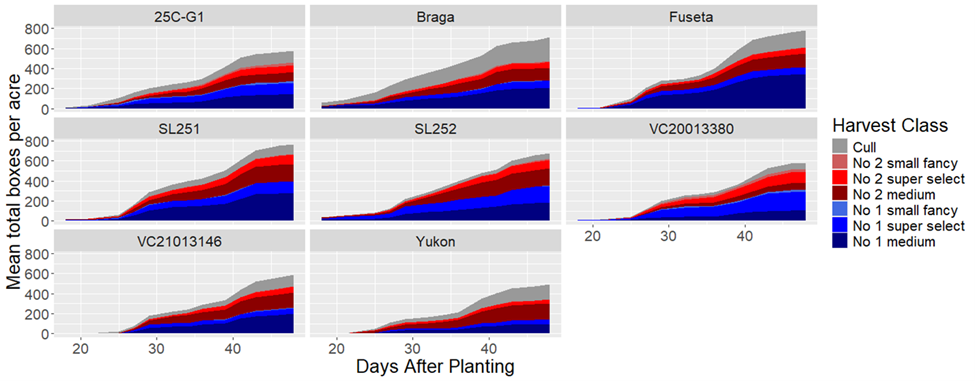
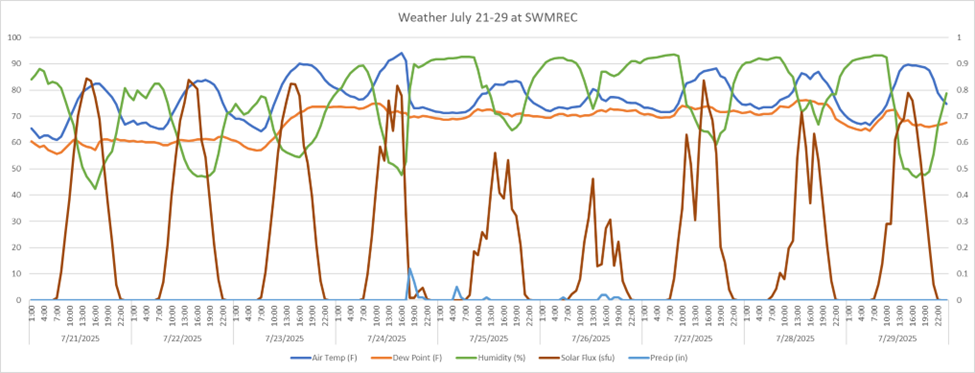
Brassicas and greens
Weather conditions going forward are going to be great for maturing broccoli and cauliflower. Caterpillars and aphids are still active and feeding on cabbage and other brassicas. Aphids can cause problems on a number of levels for vegetables: they weaken plants by feeding, the honeydew they excrete can reduce crop quality, and they can vector plant viruses in some crops.
Aphids have an unusual life cycle when it comes to vegetable insect pests. Their mode of reproduction (birthing live young versus egglaying) and their physical form (winged versus unwinged) can differ based on the time of the season and environmental conditions. There are also many different species of aphids out there that can pester vegetables. For a longer read, check out this article from the University of Wisconsin Extension.
A common sight on leaf surfaces are the so-called “aphid mummies.” Certain parasitoid wasps lay their eggs in aphids, which promptly hatch into larvae that proceed to consume the aphid internally before busting out. What remains is a lighter-colored, hollowed out aphid husk—a sign that natural enemies are active in your crops.
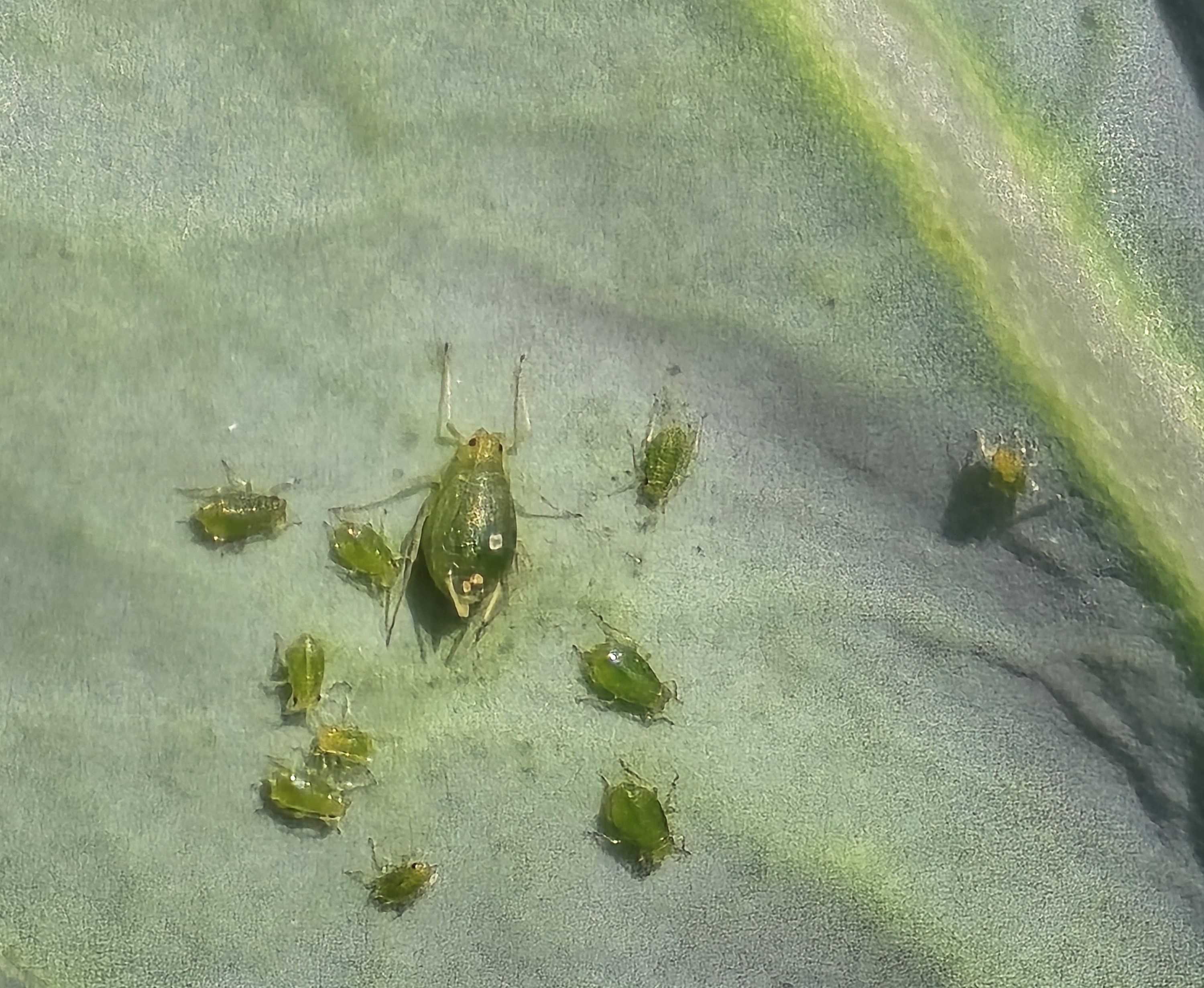
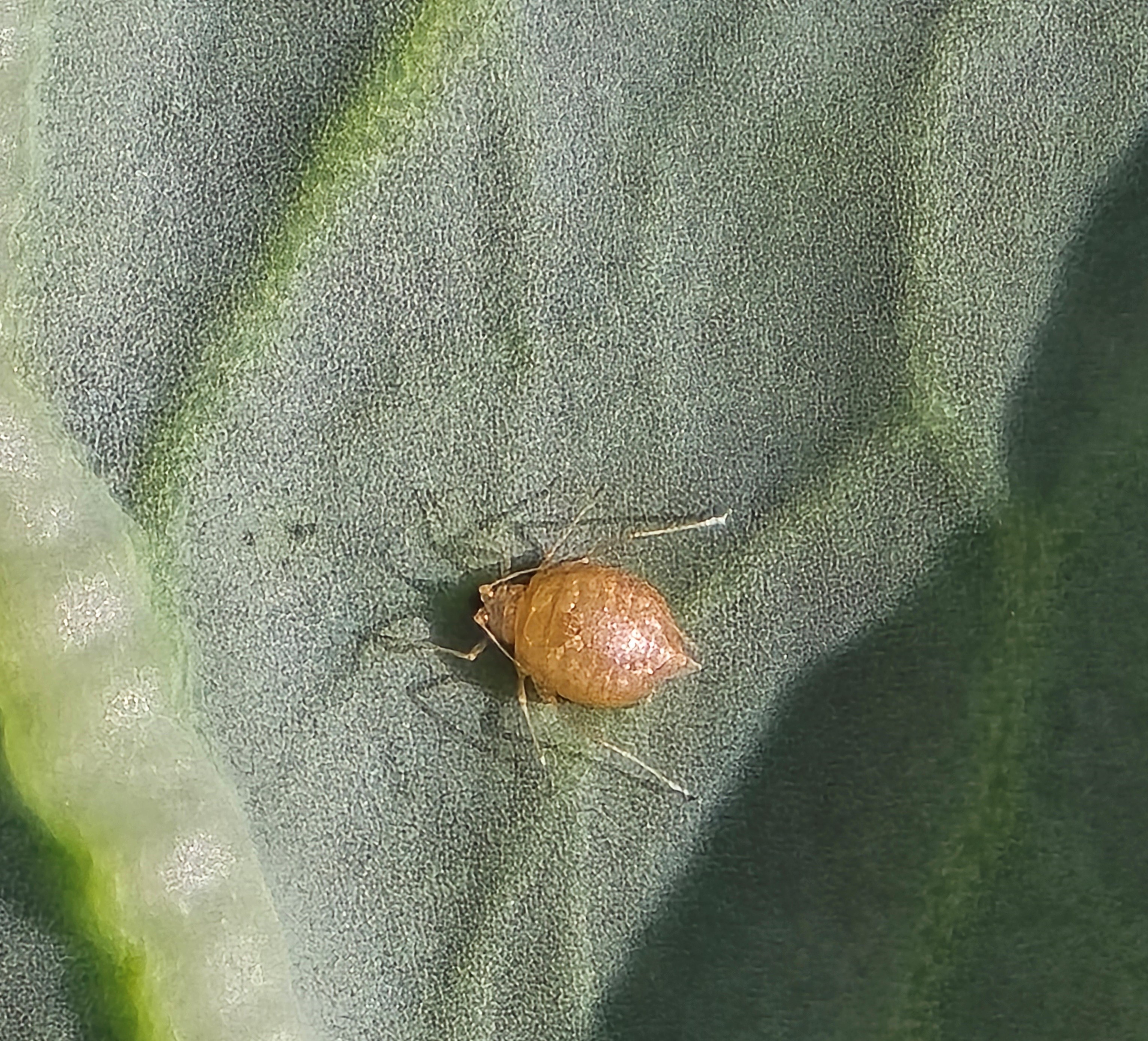
Fruiting vegetables
Pepper and tomato picks have been steady. Tomato hornworms have been reported as an issue this year. Flea beetle damage is being seen on eggplant. Issues with white internal tissue in tomatoes have been reported, likely a result of earlier hot and dry conditions.
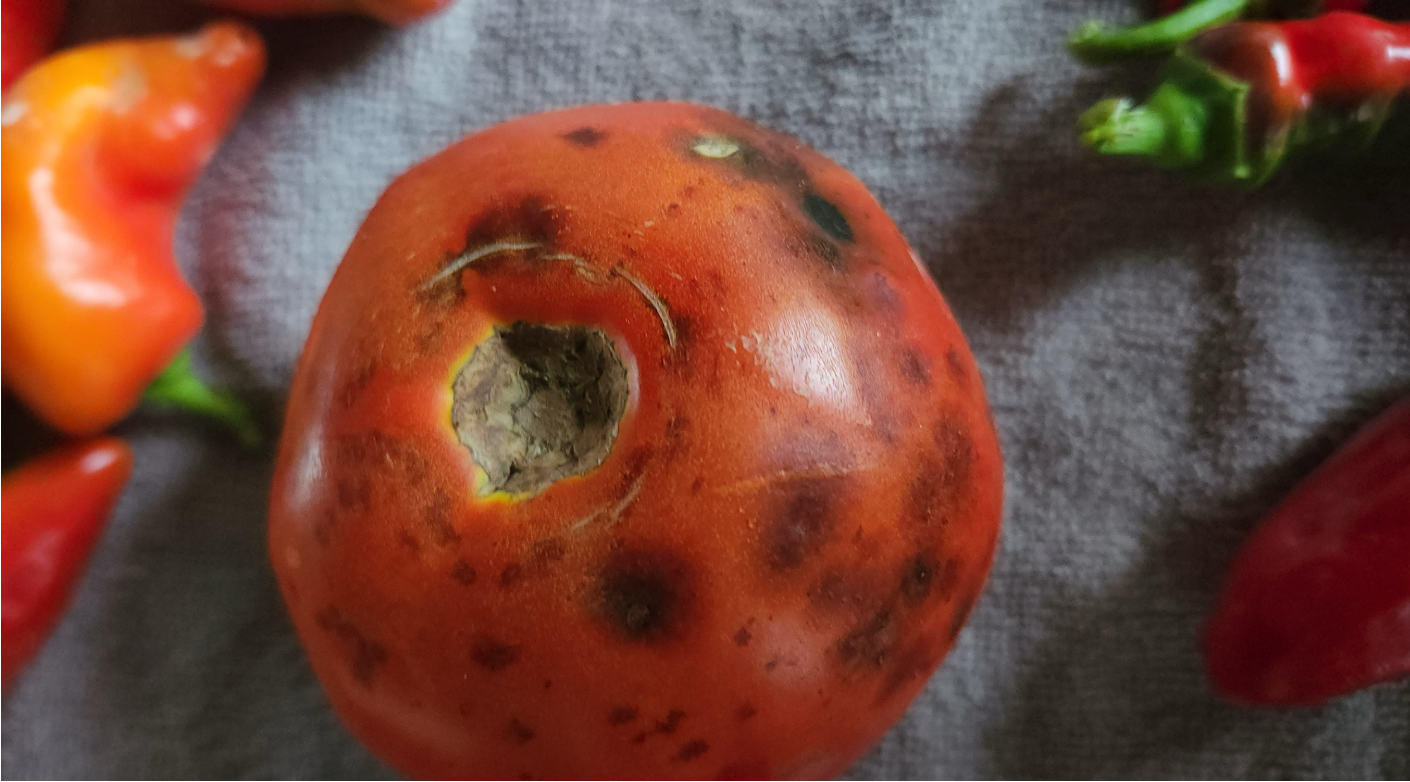
Onions and garlic
Onion harvest is still underway.
Sweet corn
Northern corn leaf blight has been observed on sweet corn. Sandhill crane damage on ears has also been reported. According to field crop specialists, southern rust pressure has been high this year in field corn, making it something to keep an eye on in sweet corn as well. “Southern rust an occasional threat to Michigan corn” by Michigan State University Extension has more information as well as a map of southern rust distribution in the region.
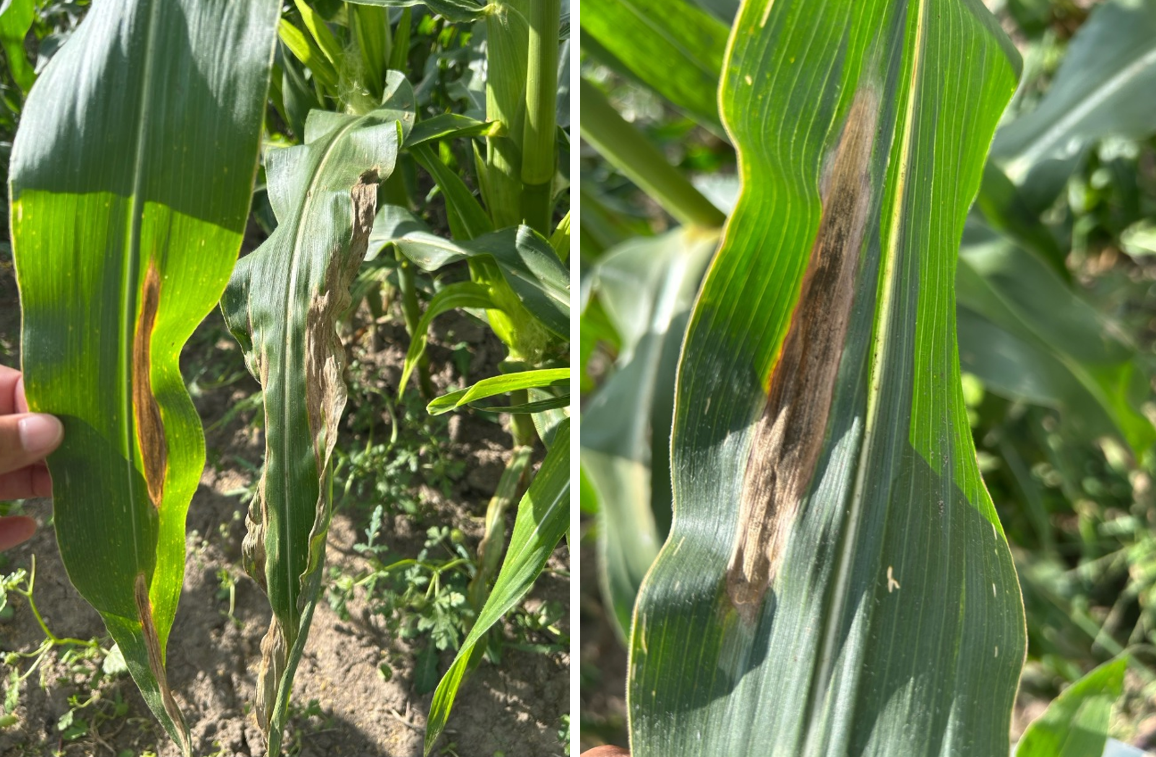
High corn earworm captures continued at one MSU Extension trapping location. When pressure is high, highly effective products can be tapped in, including those containing chlorantraniliprole (Besiege, Coragen, Elevest, Exceliprole, Shenzi, Vantacor) or spinetoram (Radiant, Hemi, Intrepid Edge). Most selection for resistance likely happens in southern climes, so in Michigan rotation amongst modes of action is not as critical as for other pests. Choose what is effective and available and abide by label restrictions.
To our south, captures had slowed somewhat in a trap network maintained by Purdue University. Insect Forecast predicts little to no risk of additional migration through Aug. 30.
Corn leaf aphid may be present in some locations. This pest is mainly an issue during pollination when high populations coat the tassel with honeydew. Bifenthrin products can reduce populations and play a role in an earworm program.
Fall armyworm is a late season sweet corn pest. Corn earworm programs typically pick it up. Read more about fall armyworm from Ohio State University Extension.
Table 1. Corn earworm captures. Total in trap for week1 (avg # per night2).
|
Week |
Saginaw Co.3 |
Oceana Co.4 |
Ottawa Co.4 |
Monroe Co.3 |
Genesee Co.3 |
Lapeer Co.3 |
Lapeer Co.3 |
|---|---|---|---|---|---|---|---|
|
6/30 |
- |
42 (7.0) |
265 (33.1) |
- |
- |
- |
- |
|
7/7 |
3 (0.4) |
122 (17.4) |
30 (6.0) |
- |
- |
- |
- |
|
7/16 |
6 (0.9) |
76 (10.9) |
4 (0.6) |
6 (0.86) |
2 (0.3) |
9 (1.3) |
2 (0.3) |
|
7/23 |
0 (0.0) |
13 (1.9) |
1 (0.1) |
- |
0 (0.0) |
0 (0.0) |
0 (0.0) |
|
7/30 |
1 (0.1) |
4 (0.6) |
21 (4.2) |
0 (0.0) |
0 (0.0) |
0 (0.0) |
(0.0) |
|
8/6 |
0 (0.0) |
2 (0.3) |
4 (0.8)5 |
0 (0.0) |
0 (0.0) |
0 (0.0) |
0 (0.0) |
|
8/13 |
1 (0.1) |
148 (16.4) |
789 (78.9) |
8 (1) |
52 (7.4) |
0 (0.0) |
4 (0.6) |
|
8/20 |
11 (1.6) |
204 (40.8) |
730 (146.0) |
- |
122 (17.4) |
0 (0.0) |
2 (0.3) |
|
8/27 |
7 (1) |
- |
410 (82.0) |
- |
22 (3.1) |
0 (0.0) |
0 (0.0) |
1Total number collected since last trap check; 2The total number divided by the number of nights since the last trap check; 3Cloth Heliothis traps track trends but catch less moths overall; 4Wire Harstack traps capture more moths. 5Trap fell over so catches may be low.
Produce Food Safety On-Farm Readiness Reviews
Schedule an On-Farm Readiness Review today for a two-hour educational visit that takes place during the harvest season and is meant to be casual and low stress. Everything discussed during an On-Farm Readiness Review is confidential and focuses on ways to reduce risks in relation to produce safety. There is no pressure to take our advice either, we are just here to support you in your produce safety efforts.
Events
- September 4, 5-8 p.m., Cover Crop Workshop at the Saginaw Research and Extension Center
- October 11, 1-3 p.m., Farm Field Day with Fisheye Farm
- October 21, 12-1 p.m., What are Your Farm Certification Goals? - TOPP Online Webinar
- October 28, 12-1 p.m., Organic Market Premium - How Much Can I Expect to Get for My Products? - TOPP Online Webinar
- November 4, 12-1 p.m., How to Make Money in Organic Farming - TOPP Online Webinar
- December 9-11, Great Lakes Expo
This work is supported by the Crop Protection and Pest Management Program [grant no 2024-70006-43569] from the USDA National Institute of Food and Agriculture. Any opinions, findings, conclusions, or recommendations expressed in this publication are those of the author(s) and do not necessarily reflect the view of the U.S. Department of Agriculture.



 Print
Print Email
Email

